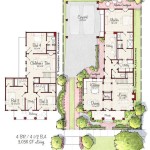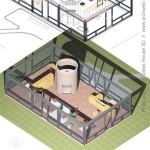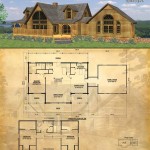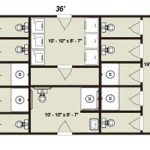Essential Aspects of Architectural Engineering House Plans
When embarking on the journey of building your dream home, architectural engineering house plans serve as the blueprint for the entire project. These detailed drawings meticulously outline every aspect of the structure, ensuring functional, aesthetic, and sustainable design. Understanding the essential components of architectural engineering house plans will empower you to make informed decisions and facilitate smooth project execution.
1. Floor Plans: The Foundation of Design
Floor plans are the backbone of architectural engineering house plans, providing a bird's-eye view of each level of the building. They illustrate the layout of rooms, hallways, stairs, and other spaces, defining the overall flow and functionality of the home. Careful consideration is given to the placement of windows, doors, and fixtures to maximize natural light and ventilation.
2. Elevations: Facing the World
Elevations, also known as exterior views, depict the outward appearance of the house from different perspectives. They showcase the roofing system, siding materials, window and door styles, and any other architectural elements that contribute to the home's aesthetic appeal. Elevations ensure consistency between the architectural plans and the final built form.
3. Sections: Cutting Through the Layers
Sections are vertical cut-through drawings that reveal the interior structure of the house. They show the relationship between different floors and spaces, including ceiling heights, wall thicknesses, and roof pitches. Sections play a crucial role in determining load-bearing walls, structural supports, and insulation requirements.
4. Building Materials and Specifications: The Ingredients of Construction
Architectural engineering house plans specify the materials to be used in the construction of the home. This includes details about the types of foundation, framing, siding, roofing, and interior finishes. The plans also provide specifications for electrical wiring, plumbing systems, and HVAC equipment, ensuring compliance with building codes and industry standards.
5. Site Plans: Connecting the House to its Environment
Site plans depict the overall layout of the house on the property. They show the location of the home relative to property lines, driveways, patios, and landscaping. Site plans also indicate the location of utilities, drainage systems, and any easements or restrictions that may affect the construction process.
6. Energy Efficiency and Sustainability: Designing for the Future
Modern architectural engineering house plans prioritize energy efficiency and sustainability. They include measures to reduce energy consumption, such as passive solar design, high-performance insulation, and energy-efficient appliances. Sustainable features may also include rainwater harvesting systems, renewable energy sources, and environmentally friendly building materials.
7. Accessibility and Universal Design: Creating Inclusive Spaces
Architectural engineering house plans should consider accessibility and universal design principles to ensure that the home is accessible to people of all abilities. This includes features such as ramps, wide doorways, grab bars, and adjustable counters to accommodate individuals with mobility impairments.
Conclusion
Architectural engineering house plans are essential documents that guide the construction of your dream home. By understanding the key components of these plans, you can make informed decisions about the design, functionality, and overall quality of your home. Involving an experienced architect or engineer will ensure that your plans are meticulously crafted, compliant with building codes, and tailored to your specific needs and aspirations.

House Plans Home Residential

Best 2024 House Design Idea For 30 By Feet Civil Engineering S

Floor Plans Learn How To Design And Plan

Diffe Types Of Building Plans The Constructor

293208315 1467081970376866 122403613533808659 N House Plans How To Plan Architectural Engineering

Floor Plan Create 2d 3d Plans Autodesk

Top 46 Stunning 2d House Plan Ideas For Diffe Areas Engineering Discoveries In 2024 Plans Architectural How To

Civil And Architectural Engineering Small House Plan Love The Simple Layout

How To Manually Draft A Basic Floor Plan 11 Steps Instructables

Architectural Engineering Building House Plan Png Clipart 3d Computer Graphics Floor Angle Architecture Art








